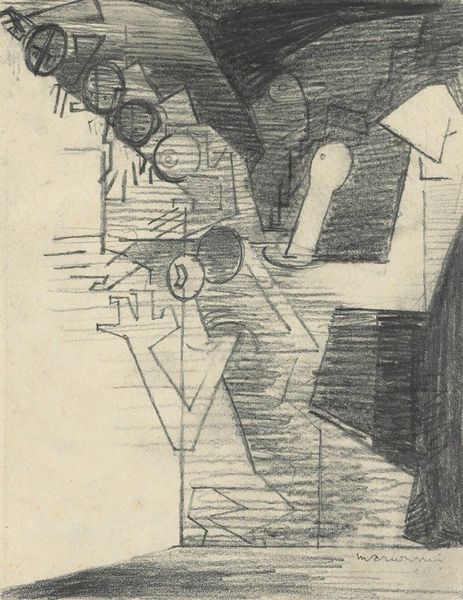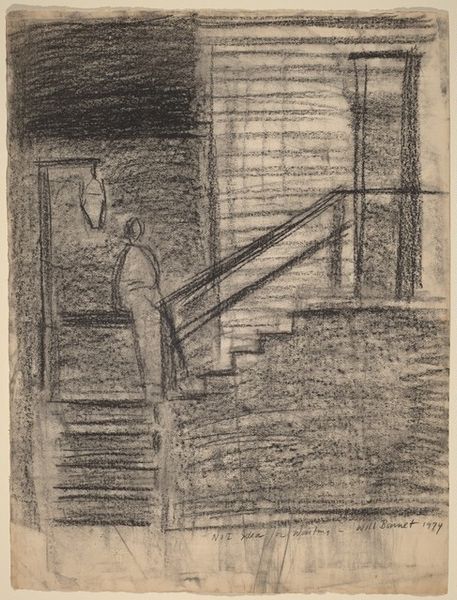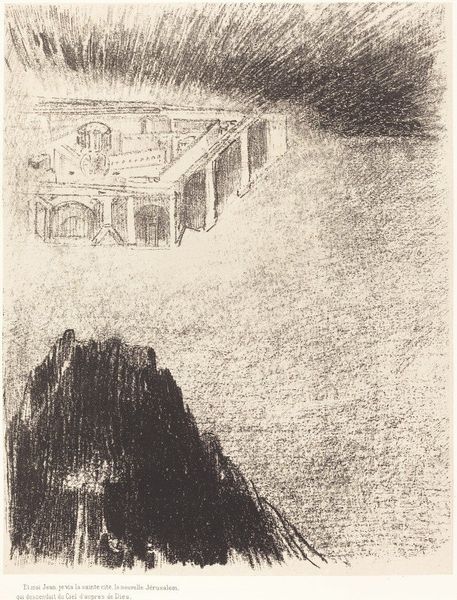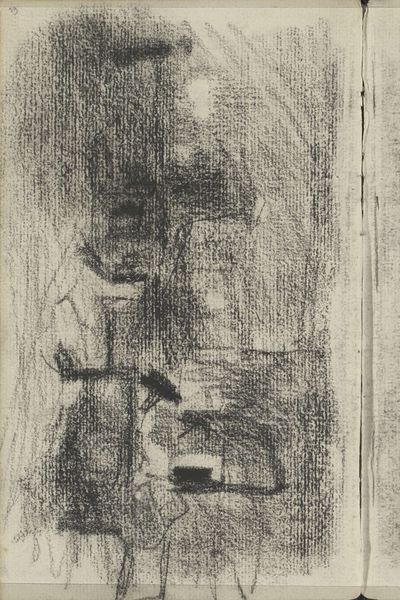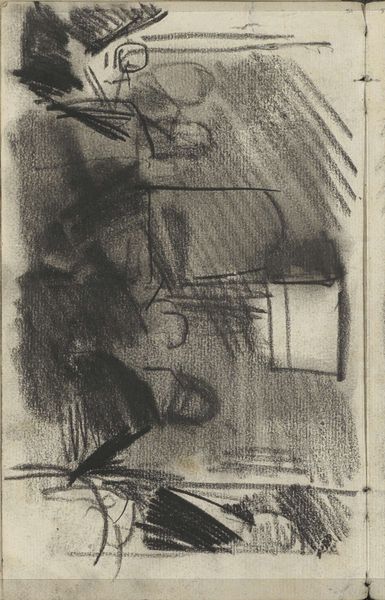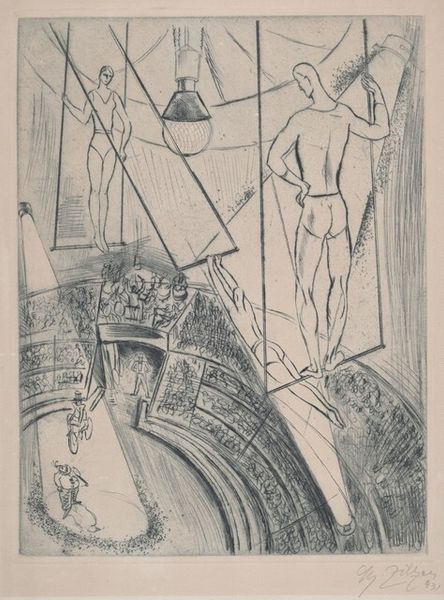
drawing, pencil, graphite
#
drawing
#
cubism
#
abstract
#
geometric
#
pencil
#
abstraction
#
graphite
#
cityscape
Copyright: Public Domain: Artvee
Editor: This graphite drawing is titled "Tombeau d’Aurélia" by Louis Marcoussis. The scene is a bit cryptic but there are strong geometric and abstract shapes, like an interior with a dark monument on the left and stairs to the right. What’s your initial take on it? Curator: It certainly encapsulates a particular historical moment, doesn’t it? Marcoussis, a key figure in the Cubist movement, created this around the time when Cubism was evolving to be integrated in architectural representations, stage design and typography. “Tombeau” literally means "tomb". Knowing this title changes everything in relation to how we read this domestic space in disarray, doesn't it? How does the cultural association of tombs affect our interpretation? Editor: Absolutely. The "tomb" association frames everything. The abstract shapes feel less arbitrary and more like symbolic markers within the interior setting. There's almost a melancholy theatricality to the scene. Given that it looks like a stairway leading nowhere, how do you see that the artist integrated social commentary? Curator: It suggests more than social commentary – the monument almost suppresses all life, while the staircase creates perspective, however it becomes impossible as it ends in a bare door frame. This drawing questions the illusion of spatial and social ascendancy that was propagated during and immediately after the first world war. The artist, with its play on geometric composition and his dramatic contrast in value, invites reflection on this impossible climb as the subject rather than mere illustration. Where do you think a piece like this fits within the trajectory of early 20th-century anxieties? Editor: I see what you mean. Knowing about Marcoussis’ historical and cultural contexts certainly shifted my view of the artwork, highlighting that “Cubism” is more than breaking into geometric forms! Curator: Indeed. It reflects how art grapples with cultural memory and social tension, inviting the viewer to dissect and challenge established realities. Editor: Thank you for your detailed explanation, seeing art through a socio-political lens adds great depths to appreciating an artwork.
Comments
No comments
Be the first to comment and join the conversation on the ultimate creative platform.

